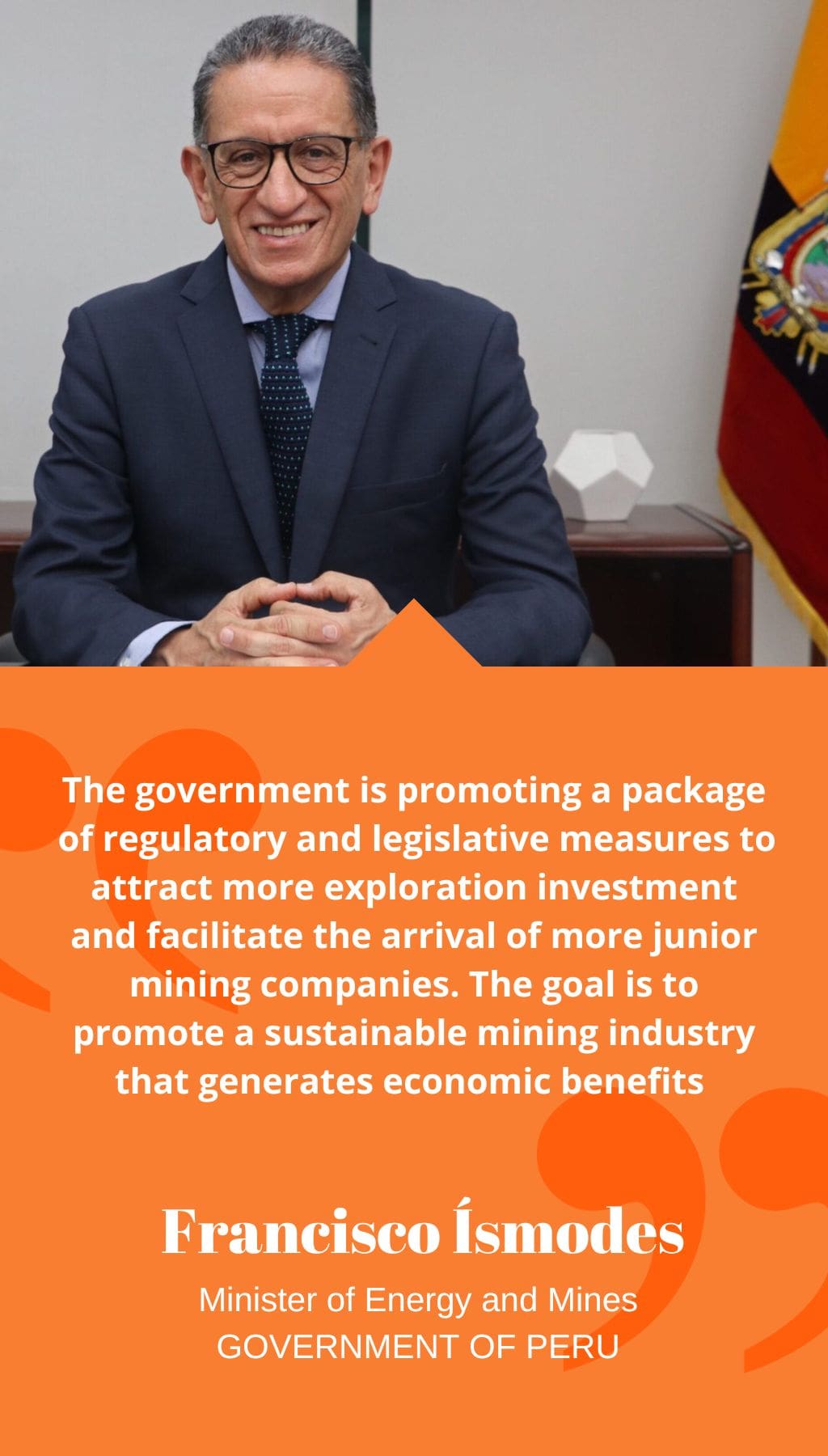
- Peru | 31 August 2021

What areas of work are covered by the RIMAY center for good practices created by the government?
In January, we presented our “Mining Vision in Peru 2030”, which prioritizes seven lines of action. The first is to strengthen the capacities of regional and local governments to improve the management of canon resources, development plans, and land use planning. The second is to promote a modern and innovative legal framework that includes the promotion of exploration. Another important issue is the promotion of clusters, promoting a favorable regulatory environment. In November of last year, the CAF-Latin American Development Bank signed an agreement with the Chamber of Commerce and Industry of Arequipa to promote sustainability and boost competitiveness in the southern zone of the country.
The other prioritized actions are: to disseminate and adopt the best water management practices; to promote R&D&I (Research, Development, and Innovation) throughout the entire production cycle; to strengthen the implementation of the comprehensive plan for the eradication of illegal mining; and to carry out a pilot plan to ensure permanent spaces of multi-actor articulation.
What levels of investment do you expect this year?
Preliminary data from April 2019 show that private investment in mining reached US$1.624 billion, which represents a 31.2% growth compared to the same period in 2018. Quellaveco, Mina Justa, and the expansion of Toromocho together represent 35% of that investment. The increase in investment reflects the greater dynamism we are seeing in the sector.
Do you think Tía María will be able to advance to the construction stage?
Tía María is a prioritized project by the government that is awaiting the granting of the Benefit Concession (which authorizes the start of construction).* We are aware that it is necessary to achieve greater social acceptance towards mining investment in the Tambo Valley. To do this, we will implement a comprehensive development strategy supported by a public-private investment plan that includes water and sanitation, improvement of health services, modernization of irrigation systems, and water strengthening works. All this aims to solve the water scarcity in the area, which is the main concern of the people.
According to the Ministry’s figures, exploration investment fell by 15% in 2018. What can be done to reverse this trend?
Despite the decline in exploration investment in 2018, Peru remains one of the main destinations for mining exploration investment. Currently, there are 26 projects in progress with a total investment of US$239.2 million. There are also 10 projects that have received the necessary authorization to start their execution (approximate investment: US$94 million). Additionally, there is a group of 23 initiatives that are completing their paperwork (approximate investment: US$231.2 million). By 2021, it is expected that these 59 projects, which are located in 17 regions of the country, will be in execution. At a general level, we maintain our objective of capturing 8% of the world’s exploration investment by 2021. Currently, we receive 6.4% of global investment, and we are working on initiatives that facilitate the development of new exploration campaigns and the arrival of more junior miners.
What are some of these initiatives?
We are pushing for regulatory improvements that are expected to be implemented in 2019. These include modifications to the exploration investment contracts and stability agreements, a new Mining Procedures Regulation, improvements to mine closure plans, and the adaptation of the regulatory framework for lithium exploitation. We will also propose the renewal of the three-year extension of the refund of the value-added tax (IGV) for exploration activities.
In summary, the government is promoting a package of regulatory and legislative measures to attract more exploration investment and facilitate the arrival of more junior mining companies. The goal is to promote a sustainable mining industry that generates economic benefits while protecting the environment and the social welfare of the communities.














